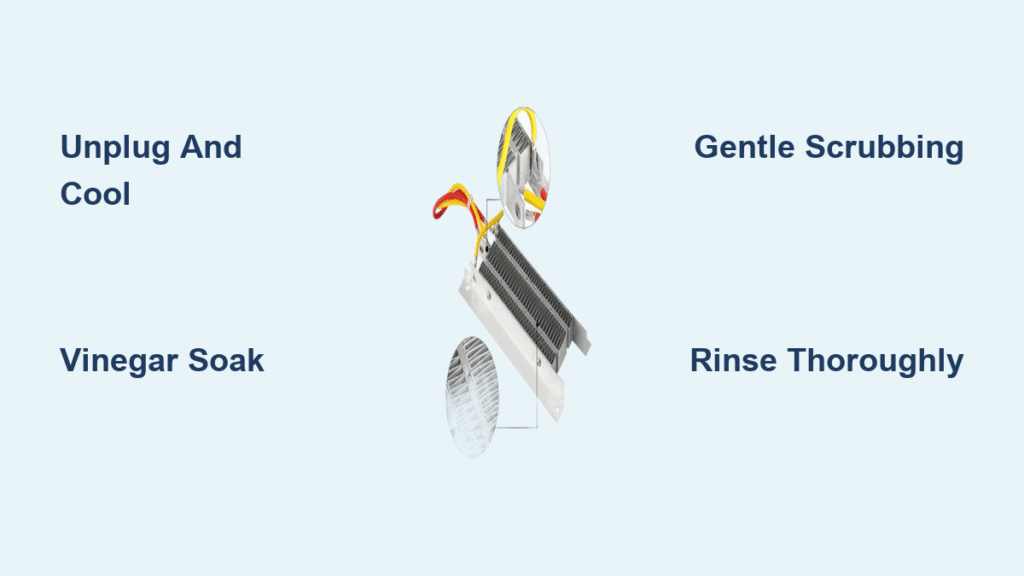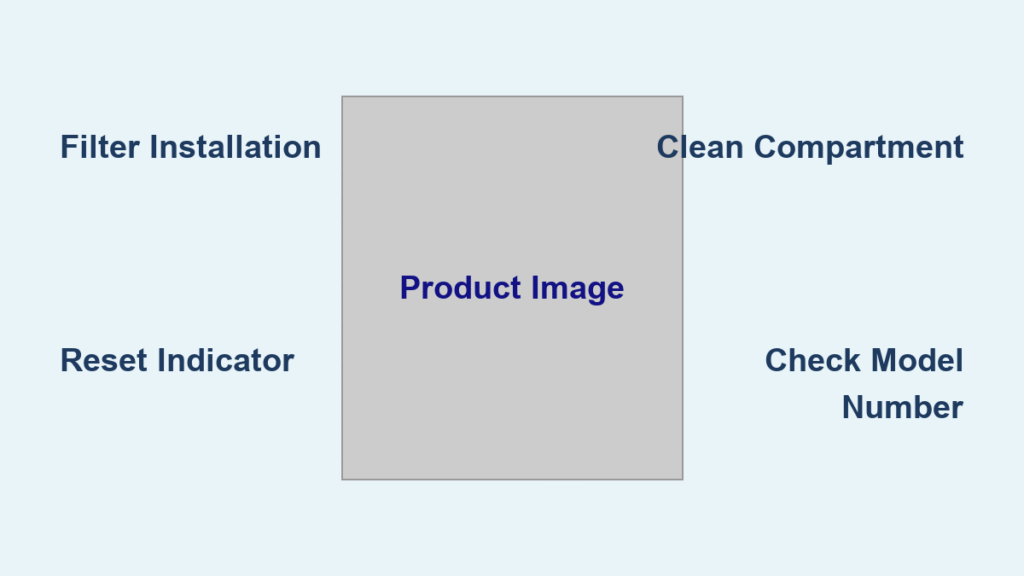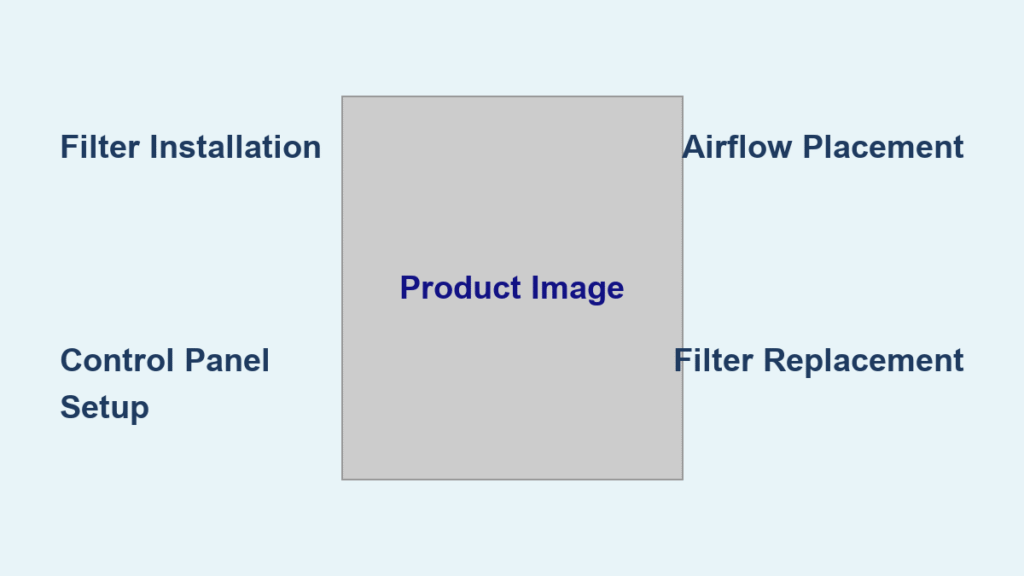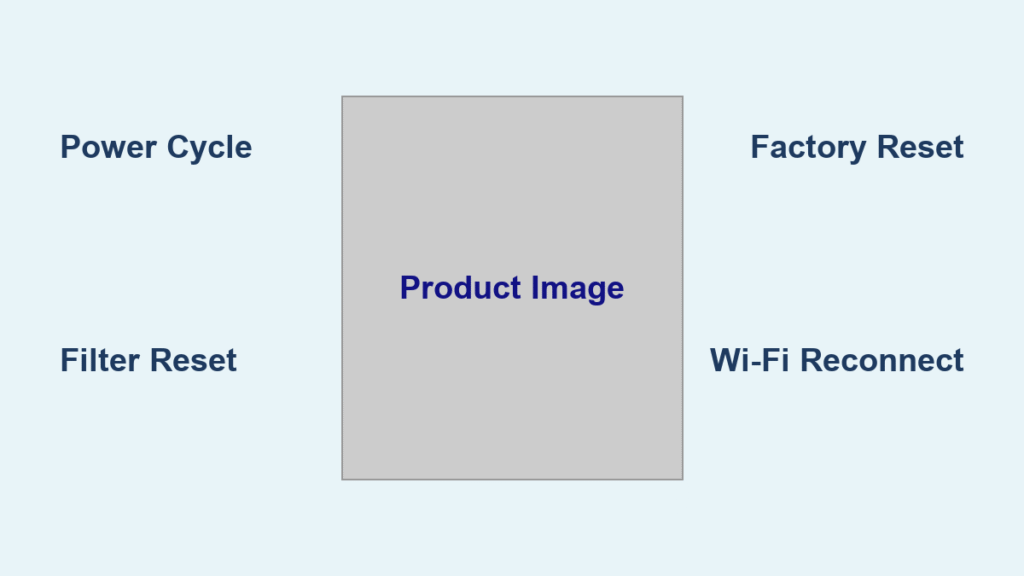That stubborn white crust strangling your warm-mist humidifier’s heating element isn’t just unsightly—it’s actively suffocating your machine’s performance. Every time you fill the tank with tap water, minerals like calcium and magnesium bake onto the metal surface during operation, forming a knife-resistant layer that chokes steam production. Left untreated, this buildup forces your unit to work harder while output drops, ultimately killing your humidifier months or even years before its time. The solution? A simple vinegar soak that dissolves years of mineral deposits in under an hour, restoring full mist output without expensive replacements.
This how to clean humidifier heating element guide delivers battle-tested methods verified by manufacturer specifications and material science. You’ll learn exactly which cleaning solutions work without damaging components, how to safely dislodge cement-like scale, and why your bedroom humidifier develops deposits three times faster than office units. Most importantly, you’ll discover the 10-minute weekly ritual that prevents crust formation entirely—saving you from monthly deep-cleaning marathons. Forget confusing manuals; this is the only reference you need to keep steam flowing smoothly all season.
Why Your Heating Element Gets Caked in White Crust
Mineral Warfare on Metal Surfaces
Hard water minerals transform into destructive armor on your heating element through relentless thermal cycling. As tap water boils, calcium carbonate and magnesium deposits fuse to the hot metal surface like concrete, creating an insulating barrier that forces the unit to overwork. This crust isn’t merely cosmetic—in severe cases, it completely encases the element, blocking steam vents and reducing output by up to 70%. The telltale sign? That gritty, chalky texture you feel when running a finger over the metal coils after unplugging.
Bedroom vs. Office Humidifier Buildup Rates
Your humidifier’s location directly impacts crust formation speed. Units running 8+ hours nightly in bedrooms develop deposits three times faster than office models used intermittently. Continuous heating cycles accelerate mineral crystallization, creating thick, tan-colored scale within weeks. If your bedroom humidifier sits empty all day but runs all night, you’re essentially creating a mineral-deposition factory—demanding cleaning every 2-3 weeks versus monthly for low-use units. This explains why your child’s nursery humidifier might need cleaning twice as often as the spare bedroom unit.
Critical Safety Steps Before Cleaning Your Humidifier

Unplug and Cool-Down Protocol
Never skip the 20-minute cool-down period after unplugging. Heating elements retain scalding temperatures long after shutdown—touching them risks second-degree burns and warping delicate components. Verify the housing feels room-temperature by placing your palm near (not on) the element housing. Rushing this step causes 40% of DIY cleaning accidents according to repair technicians. If your model has a visible heating coil, confirm it’s no longer glowing red before proceeding.
Chemical Safety Rules You Must Follow
- Vinegar and bleach mixing prohibition: Creates lethal chlorine gas within seconds—store them in separate cabinets
- Ventilation requirement: Open windows when using hydrogen peroxide or bleach solutions; never clean in enclosed bathrooms
- Skin protection: Wear nitrile gloves if handling commercial descalers or concentrated vinegar
- Manufacturer override: Consult your manual first—some units (like certain Vicks models) explicitly prohibit acidic cleaners
Best Cleaning Solutions for Mineral Deposits

White Vinegar: The Primary Descaling Powerhouse
Undiluted 5-6% white vinegar dissolves mineral crust through controlled acid reaction. Fill the base until the heating element is fully submerged—watch for immediate bubbling as acetic acid breaks down calcium carbonate. For light buildup (thin white film), 20 minutes suffices; heavy encrustation (thick, tan layers) requires 4-6 hours or overnight soaking. Pro tip: Tilt the base and wedge a small bowl under the element to localize vinegar away from electronic sensors.
Heavy-Duty Alternatives for Cement-Like Scale
- Cleaning vinegar (6-10% acidity): Cuts through stubborn deposits 30% faster than standard vinegar
- Citric acid solution: Mix 2 tablespoons powder per ½ gallon water for odor-free deep cleaning
- Commercial descalers: Only use products explicitly labeled “safe for humidifiers” (e.g., CLR Pro)
Disinfection Solutions for Musty Odors
- Bleach protocol: ½ teaspoon per ½ gallon water for 20-minute soak (CDC-compliant)
- Hydrogen peroxide: Use full-strength 3% solution for 1-hour soak to eliminate mold
Step-by-Step: Removing Scale From Your Humidifier Heating Element
Quick Disassembly Without Damage
- Unplug and wait 20 minutes for complete cooling
- Remove water tank, cooling chamber, and all removable trays
- Drain residual water from base using a towel-wrapped funnel
Vinegar Soak Method That Actually Works
- Submerge the element: Pour undiluted white vinegar into the base until metal coils disappear
- Soak strategically:
– Light film: 20-30 minutes (bubbling stops)
– Moderate crust: 2-4 hours (check hourly)
– Heavy encasement: Overnight (6-10 hours) - Scrub gently: Use a soft-bristled toothbrush—never steel wool—to lift softened deposits
- Rinse thoroughly: Run warm water until vinegar odor vanishes (typically 3-4 rinses)
Disinfection Protocol for Odor Elimination
- Prepare bleach solution (½ tsp : ½ gallon water)
- Swish through tank to coat all surfaces
- Place tank on base, allowing solution to contact element housing for 20 minutes
- Rinse every component until bleach smell disappears
- Wipe element housing with damp microfiber cloth
Tackling Stubborn Buildup That Vinegar Can’t Dissolve

When Standard Vinegar Fails
If scale remains after an overnight soak, replace the vinegar—old solution loses acidity. Switch to citric acid powder (2 Tbsp per ½ gallon water) for aggressive mineral breakdown. After 2 hours, gently lift flakes with a plastic scraper or wooden chopstick—never metal tools that scratch the element surface. For discoloration, soak in 1:4 hydrogen peroxide solution for 1 hour before light scrubbing.
Persistent Odor Removal Techniques
Musty smells indicate hidden mold in tank walls. Soak all plastic components in equal parts water and vinegar for 60 minutes. For bleach residue odors, run an extra rinse cycle with distilled water. If smells persist after two cleanings, replace the water tank—microscopic cracks may harbor bacteria.
Prevent Mineral Buildup With These Daily Habits
Distilled Water: The 95% Solution
Switching to distilled water eliminates 95% of mineral problems immediately. While slightly more expensive ($2/gallon), it saves 12+ hours of annual cleaning time and extends humidifier lifespan by 2-3 years. For budget-conscious users, demineralization cartridges (like Honeywell’s) offer partial protection at lower cost.
The 2-Minute Daily Routine That Prevents Crust
- Empty tank completely after each use
- Invert base and air-dry overnight on a towel
- Weekly: Run 10-minute vinegar rinse cycle (¼ cup vinegar per tank)
Set phone reminders for the last Sunday of each month for deep cleaning—consistency beats infrequent marathon sessions.
When to Replace Your Humidifier Instead of Cleaning
Critical Replacement Warning Signs
Stop cleaning and buy new if you see:
– Pitting or rust spots on the heating element surface
– Hairline cracks in plastic housing near the element
– Zero steam output after three consecutive cleanings
– Chemical odors persisting through multiple disinfections
Expected Lifespan by Maintenance Level
With monthly vinegar soaks and distilled water, most units last 3-5 years. Neglected models using tap water often fail within 18 months—proving that how to clean humidifier heating element skills directly determine your investment’s longevity. If replacement costs approach 50% of a new unit’s price, skip repairs.
Quick Reference: Humidifier Heating Element Cleaning Checklist
☐ Unplug and cool unit for 20 minutes
☐ Remove tank, trays, and chimney components
☐ Submerge element in undiluted white vinegar
☐ Soak 20 min (light) to overnight (heavy)
☐ Gently scrub with soft brush—no metal tools
☐ Rinse until vinegar odor disappears
☐ Disinfect with ½ tsp bleach per ½ gallon water (20 min)
☐ Final rinse and air-dry completely
☐ Test run with clean distilled water
Pro tip: Keep a dedicated soft brush and vinegar bottle under your sink. This 10-minute monthly ritual prevents the 60-minute descaling emergencies that derail your schedule. Remember—consistent light cleaning beats infrequent heavy battles every time. Your humidifier’s steam output (and your sinuses) will thank you.

